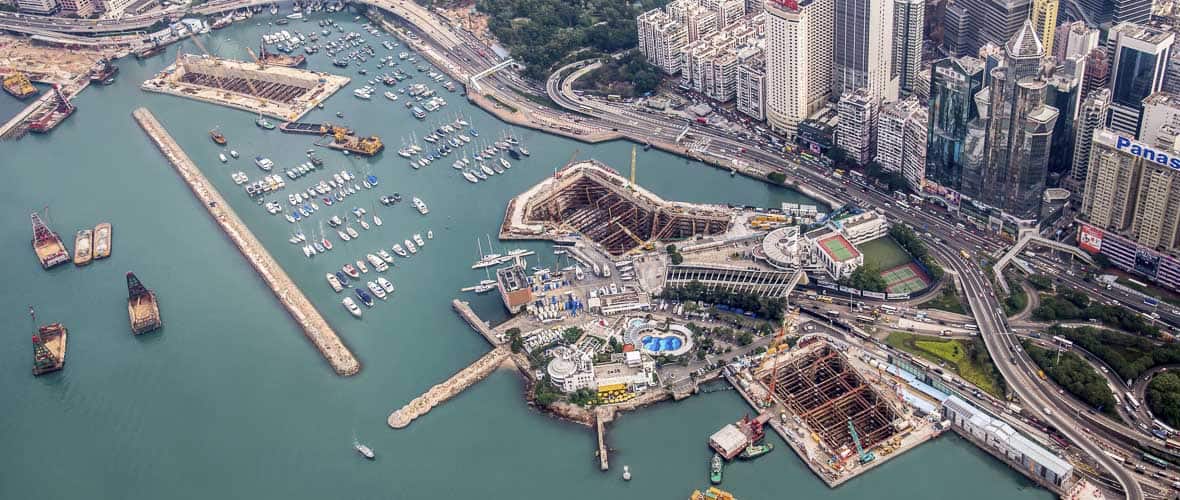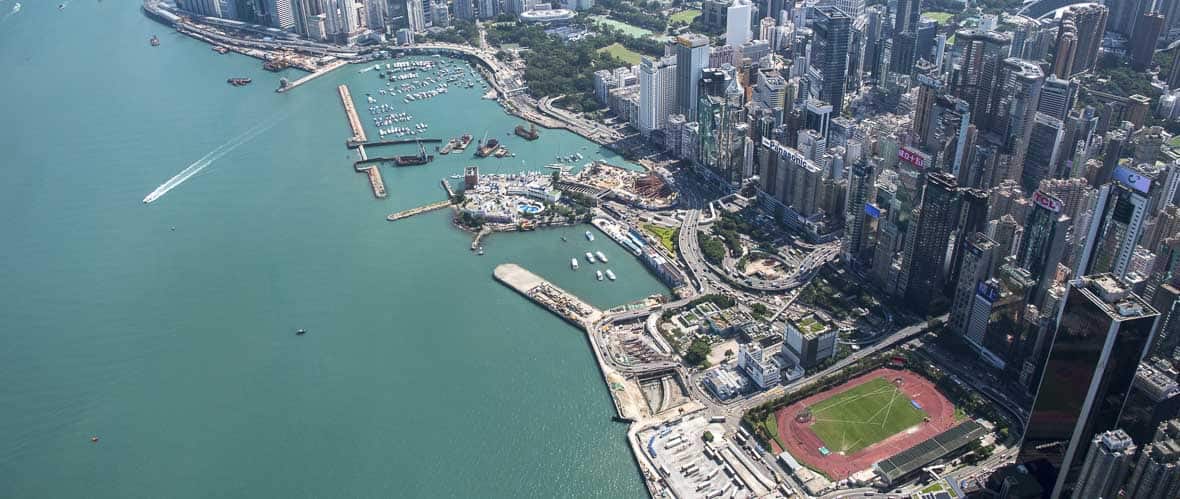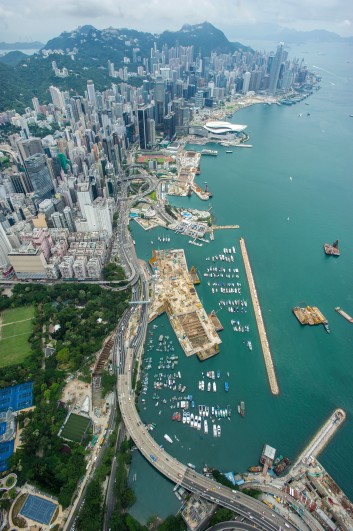From its conception to breakthrough, constructing a mined tunnel underneath the southern portal of the busiest road tunnel namely the Cross Harbour Tunnel (CHT) across Hong Kong’s Victoria Harbour is a remarkable achievement.
The Central-Wan Chai Bypass is a strategic road along the north shore of Hong Kong Island to alleviate the traffic congestion along the Gloucester Road – Harcourt Road – Connaught Road Central corridor and a 4.5km dual three-lane highway tunnel connecting Central and North Point. “Drill-and-Break” tunneling technology was used to excavate a trinocular mined tunnel in rock 26m below ground and 16m below the level of the adjacent Victoria Harbour. The Mined Tunnel is part of the Central–Wan Chai Bypass and Island Eastern Corridor Link (CWB). It passes 20m beneath the southern approach ramp of the Cross-Harbour Tunnel (CHT).
One of the biggest Minded Tunnel construction challenges was to excavate a large span of 50m in a hard rock stratum underneath the portal structure of the CHT constructed in early 1970s with a series of tie-down anchors. Given that CHT is a vital route between Kowloon and Hong Kong Island carrying about 120,000 vehicles a day, the team need to construct the Mined Tunnel under CHT safely and reliably. Due to concerns and uncertainties revealed by design, the tunnel is positioned to maintain maximum possible clearance from the CHT anchors.
Completion of the Mined Tunnel excavation within the tight programme successfully demonstrates the numerous challenges that CWB project encountered from the stages of design to construction, the problems were solved and the task was completed successfully by virtue of the team work amongst the project team that those who are involved in the execution in design and supervising of the tunnel construction and react cooperatively on resolving any problems.
The challenges were overcome and the 50m large span Mined Tunnel successfully broken through within the period from September to October 2014 and substantial completion of Mined Tunnel excavation in April 2015. Completion of the permanent lining is anticipated for September 2015.
The success of the project was also depended on a comprehensive Safety for Life programme and culture of catering for others.




